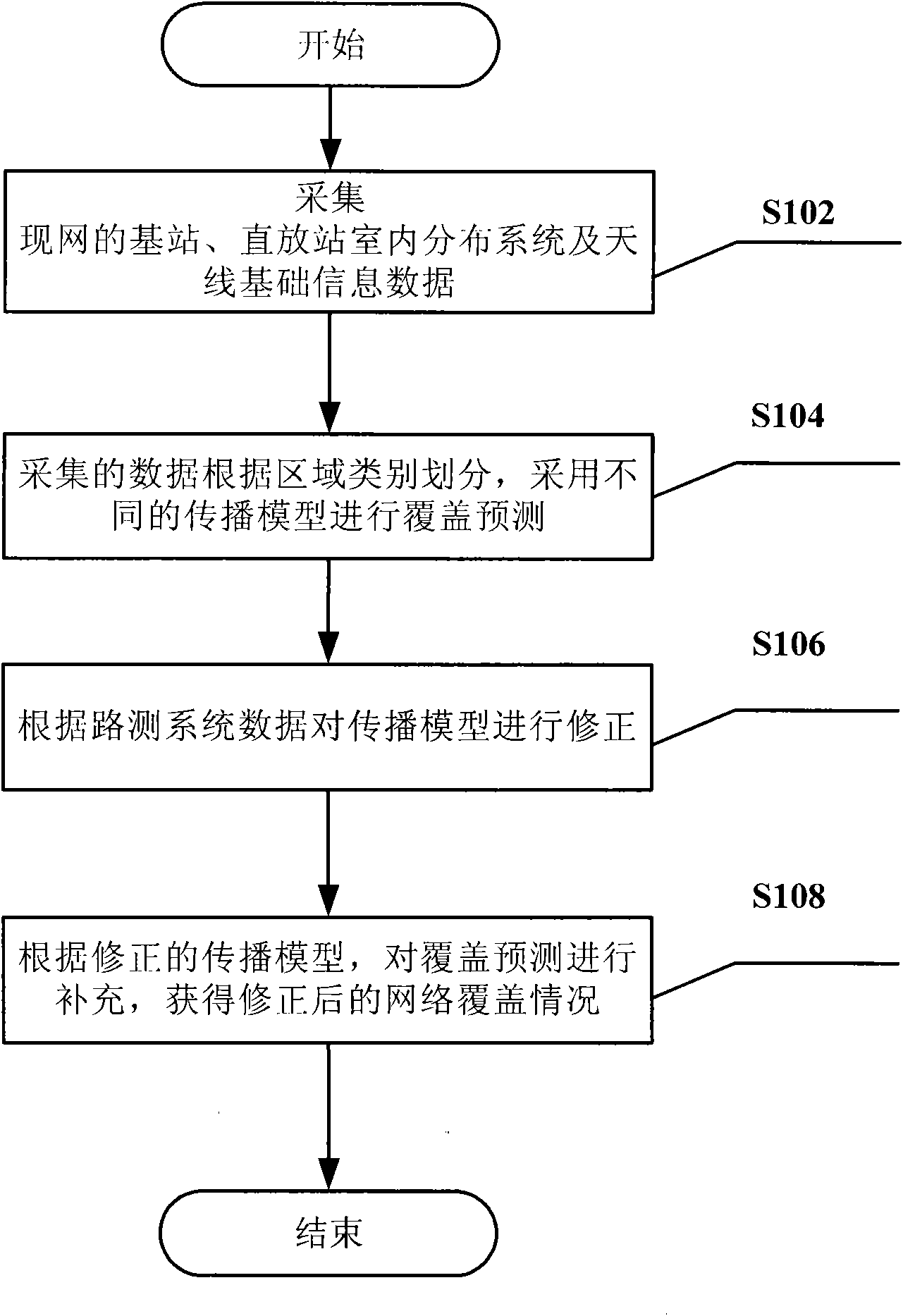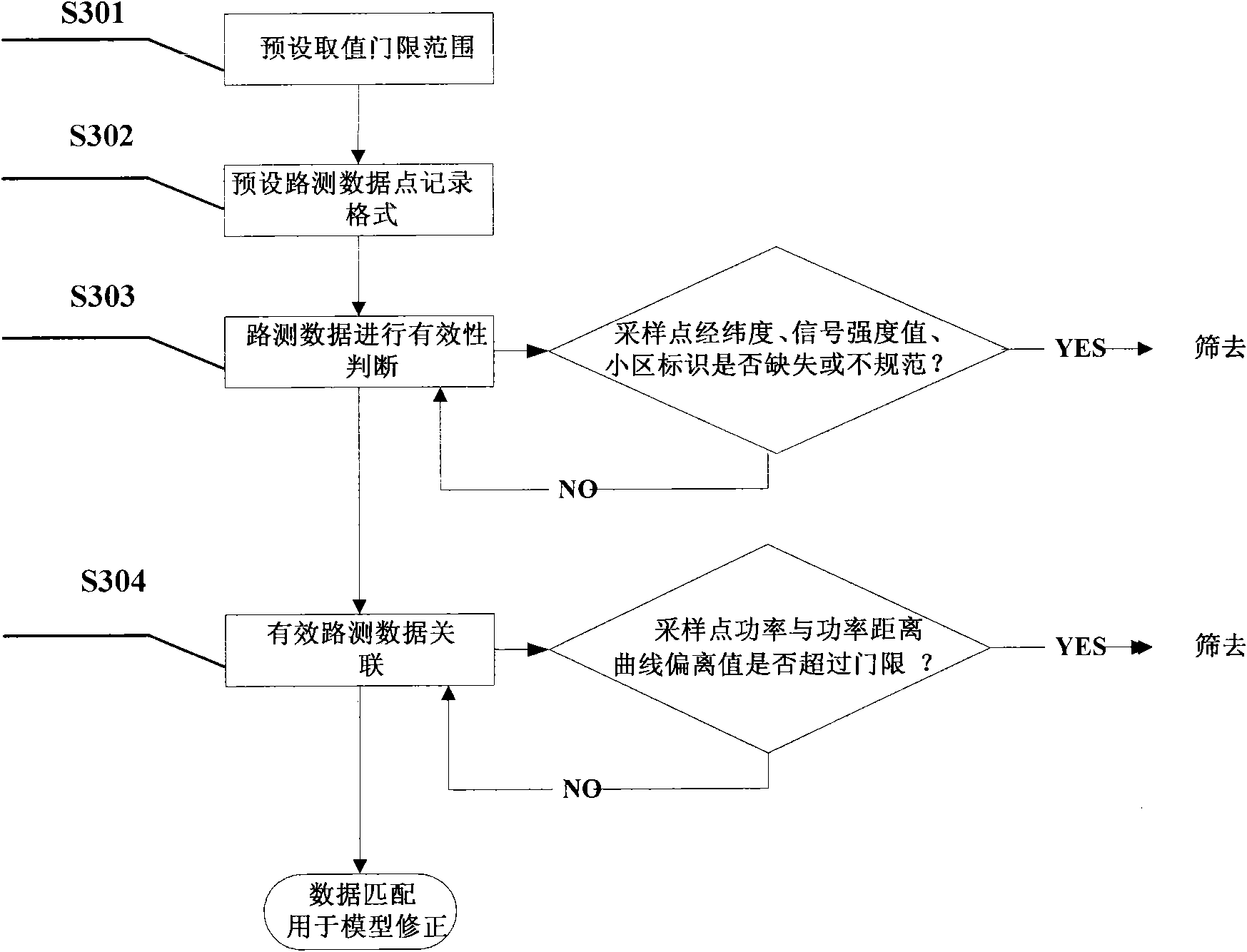Transmission model-based network coverage correcting method and system
A propagation model and network coverage technology, applied in network planning, electrical components, wireless communication, etc., can solve problems such as inaccuracy, limited sampling of network problems, and long test cycle, so as to avoid time-consuming and labor-intensive effects
- Summary
- Abstract
- Description
- Claims
- Application Information
AI Technical Summary
Problems solved by technology
Method used
Image
Examples
Embodiment 1
[0027] figure 1 It is a flow chart of Embodiment 1 of the network coverage correction method based on the propagation model according to the present invention, such as figure 1 As shown, this embodiment includes:
[0028] Step S102: Extract the base station, repeater indoor distribution system and antenna basic information data of the existing network from the Operation Maintenance Center (OMC for short), such as extracting the base station and antenna parameters of the existing network from the OMC at the cell level And repeater indoor distribution system data;
[0029] Step S104: Divide the data collected in step S102 according to the area category, and use different propagation models for different categories to perform coverage prediction;
[0030] For example, the coverage area is divided into dense urban areas and suburban areas, and is divided into dense urban areas or suburban areas according to the location of base stations and antennas, and the "Urban" propagation ...
Embodiment 2
[0037] figure 2 It is a flow chart of an embodiment of presenting the network coverage modification method based on the propagation model applied to GSM and TD networks in the present invention. Such as figure 2 shown, including:
[0038] Step 201: collecting and reading the basic information of the indoor distribution system of base stations, antennas and repeaters in the GSM and TD mobile communication systems;
[0039] Generally, these basic information can be statically entered into the OMC in advance. The basic information of the GSM network base station can include the latitude and longitude of the base station, cell name, antenna type, antenna height, antenna direction angle, antenna downtilt angle, antenna gain, and cell broadcast channel frequency. Broadcast Control Channel (BCCH for short), Base Station Identity Code (BSIC for short), etc.; the collected TD network base station basic information includes the latitude and longitude of the base station, cell name, ...
Embodiment 3
[0063] image 3 for figure 1 Step S102 in step S102 is specifically applied to the schematic diagram of an embodiment of the acquisition process of GSM and TD network drive test data, as image 3 As shown, this embodiment includes:
[0064] Before collecting the drive test data, first set the value range of the data and the stored format after collection according to steps S301-302, and then collect according to the order of steps S303-304. The specific process is as follows:
[0065] Step S301: Preset the value threshold range, setting the value threshold can filter out some invalid data;
[0066] Considering that the data that is too close to the base station is generally a direct signal, it cannot reflect the impact of the surrounding terrain on wireless transmission, and needs to be filtered out; for the data that is too far away from the base station and the strength is too weak, the signal has been submerged in the noise and should be filtered out . Therefore, in thi...
PUM
 Login to View More
Login to View More Abstract
Description
Claims
Application Information
 Login to View More
Login to View More - R&D
- Intellectual Property
- Life Sciences
- Materials
- Tech Scout
- Unparalleled Data Quality
- Higher Quality Content
- 60% Fewer Hallucinations
Browse by: Latest US Patents, China's latest patents, Technical Efficacy Thesaurus, Application Domain, Technology Topic, Popular Technical Reports.
© 2025 PatSnap. All rights reserved.Legal|Privacy policy|Modern Slavery Act Transparency Statement|Sitemap|About US| Contact US: help@patsnap.com



